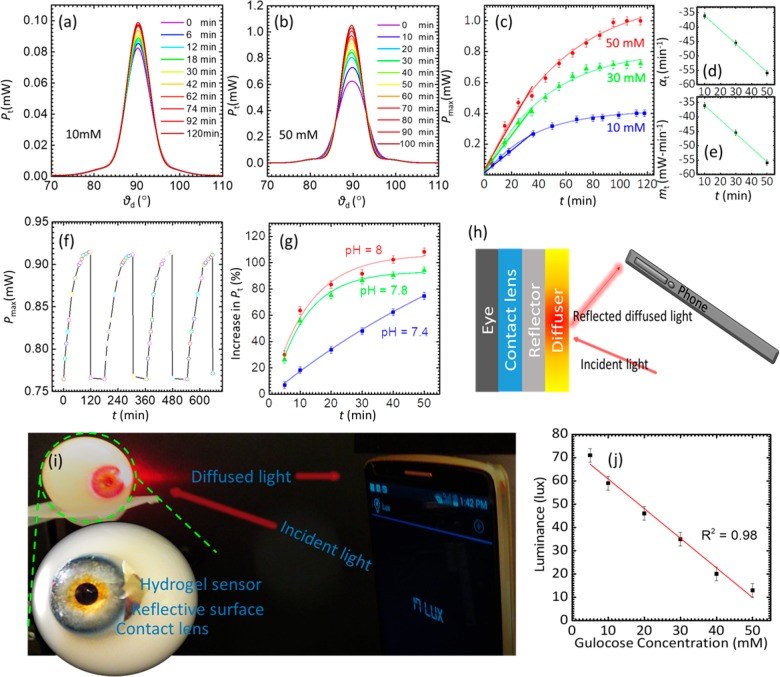Figure 5.
Reusability and response time of the imprinted optical glucose sensor. (a) Transmitted light power versus the diffusion angle recorded within the time span of 0 ≤ t ≤ 120 min for 10 mM glucose concentration. (b) Optical transmitted power versus the diffusion angle recorded within the time span of 0 ≤ t ≤ 120 min for 50 mM glucose concentration. (c) Peak power of the transmitted light versus 10, 30, and 50 mM glucose concentration over 120 min. (d, e) Time coefficients and slopes calculated using exponential fit (for at all data points) and linear fit for shorter span (over 40 min), respectively. (f) Switching of the sensor for various cycles against introduction or depletion of glucose (10 mM). (g) pH sensitivity of the hydrogel sensor for various glucose concentration at different pH values. (h) Schematic illustration of glucose sensing using a mobile phone. Microimprinted optical glucose sensor integrated on a contact lens. The light illuminated on the glucose sensor reflects back and alters the diffused light profile upon different glucose concentration exposures. (i) Experimental setup: photograph of an artificial eye with attached contact lens and sensor and schematic of the construction of contact lens. (j) Quantification of glucose sensing using a smartphone camera taken at a distance of 10 cm.

